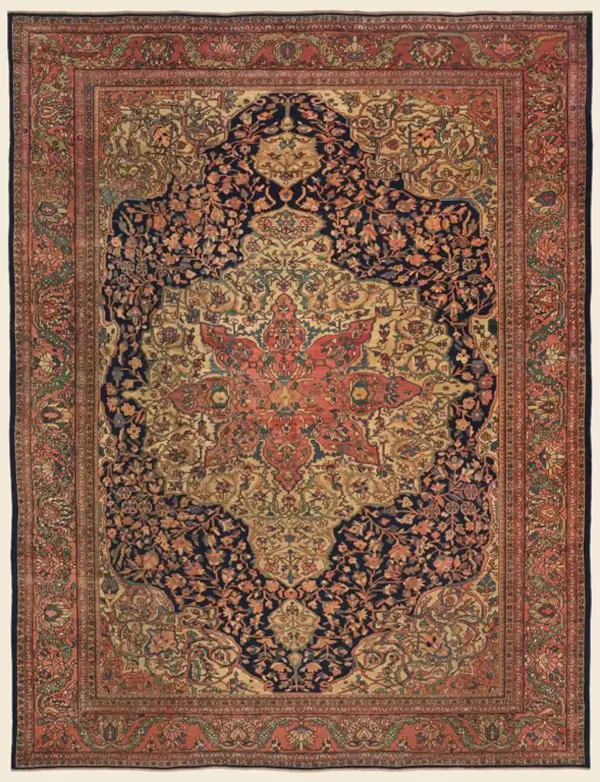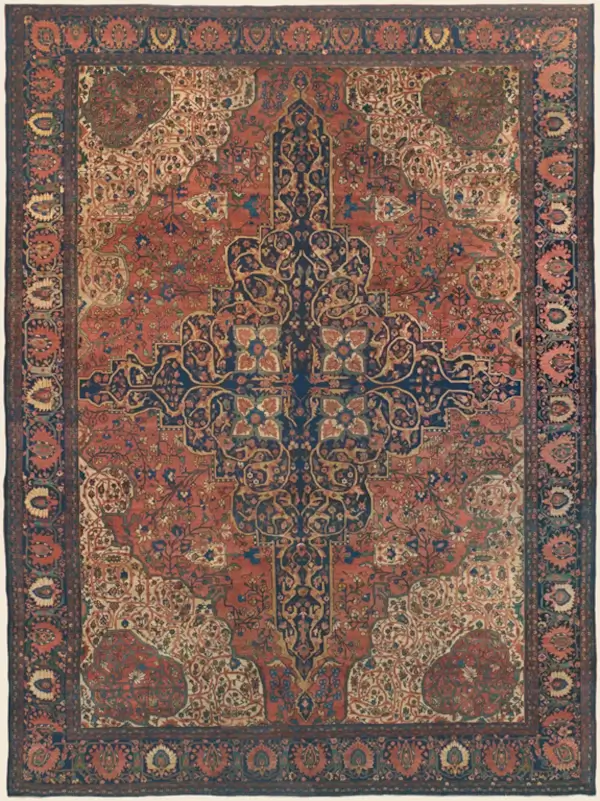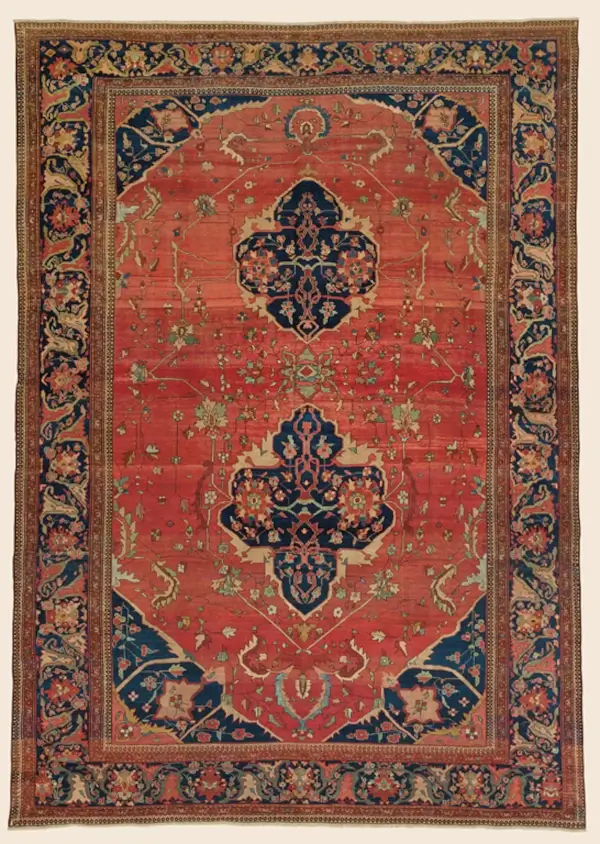Farahan (Feraghan, Ferahan) rug
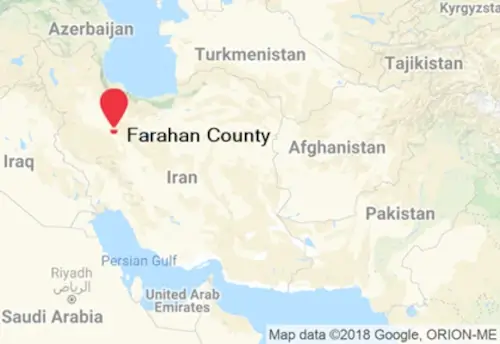
Farahan is one of the counties of Markazi province in Iran. The county is a part of
the historical land of the great Farahan, including northern areas of Arak city and
parts of the cities of Tafresh and Ashtian, up to the eastern borders of the Hamedan
province. There are more than two hundreds of small and large villages in the county
located on the Farahan plain and the surrounding mountains. Agriculture and
livestock farming are the main businesses of the Farahani people. Rug-weaving is
the most important art and a handicraft of the county.
Size: these rugs are mostly medium-sized and rectangular-shaped. Some examples
enjoy noticeable lengths, 12 3 for instance. These are also well-known as “Kalegi”.
The main characteristics of Farahan rugs:
Size: these rugs are mostly medium-sized and rectangular-shaped. Some examples
enjoy noticeable lengths, 12 3 for instance. These are also well-known as “Kalegi”
Warp: mostly cotton.
Weft: blue or pink cotton weft is common in Farahan rugs. The weft is a thick cotton
yarn which interweave the warps two times after each raj. Because of the thickness
of the weft and delicacy of the warp you could see white lines on the back of Farahan
rugs.
Back: The lines are parallel with horizontal prominence. These prominent lines are
made of thick cotton-wefted yarns. The texture is dense and the knots are rather
large.
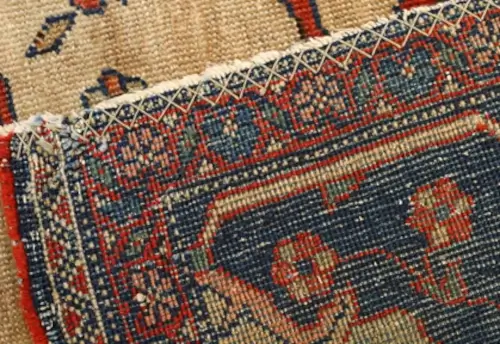
Knot count: Generally between 20 and 35. However, there are always exceptions,
and some there are some rare examples of Farahan rugs that have a finer number,
for example, up to 7,000 asymmetric knot per square decimeter.
Knot: The most common knot used in Farahan rugs is asymmetrical (Persian). Nap
is short in older pieces and medium in new ones.
Design and pattern: Herati (without medallion), Gol Hana, Mahi and Daste Gol
(bouquets) are commom patterns in the region of Farahan. The tiny patterns are
woven in a yellowish green field which is surrounded by triple and quintuple and
septuple borders. Herati pattern stands on the border’s main frame and it could be
green in old pieces. The general Farahan designs are Lachak-Toranj (medallion),
Afshan, Shah Abbasi, Mahi, Daste Gol (Bouquet), Miniature Herati, and also
designs with no Lachak whose motives are mostly fish and bouquets.
Color: In Farahan rugs one sees a range of reds (dark vermillion, carmine, crimson
and pink), and ivory and dark blue in old examples. Dyes are generally herbal in
Farahan rugs except verdigris and olive which are used in some borders and obtained
from copper sulphate which could bring corrison to wool over time.


